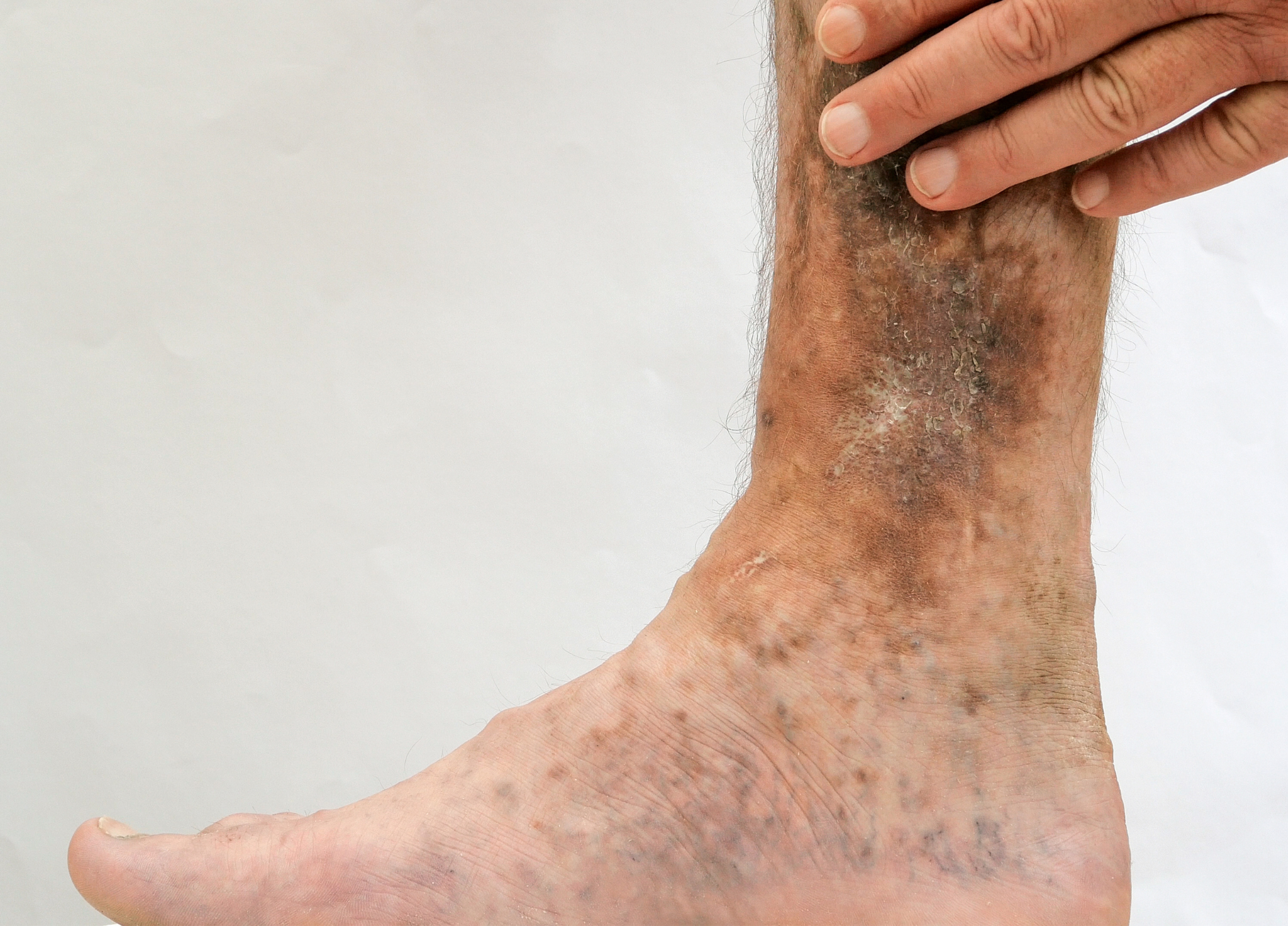Category
Venous leg ulcers are a chronic and often painful condition that affects many individuals, particularly those with underlying venous insufficiency.

Have any questions?
If you have any questions, feel free to contact us at [email protected]. A member of our support team will help you shortly.
Share this blog
Fatigue
Energy
Stress
Sleep
Venous leg ulcers are a chronic and often painful condition that affects many individuals, particularly those with underlying venous insufficiency. Understanding the causes, recognizing the symptoms, and implementing effective wound care strategies are essential for managing venous leg ulcers and promoting healing. This article will delve into the causes, symptoms, and comprehensive wound care approaches for individuals dealing with venous leg ulcers.
Venous leg ulcers primarily result from chronic venous insufficiency, where the veins fail to return blood from the legs to the heart efficiently. This impaired circulation leads to increased pressure in the veins, causing fluid to leak into the surrounding tissues and resulting in ulcers. Key contributing factors include:
Venous insufficiency often occurs due to damaged or malfunctioning valves within the veins. Healthy valves ensure blood flows in one direction—towards the heart. When these valves fail, blood can pool in the lower extremities, leading to increased pressure and the formation of ulcers.
Blood clots in the deep veins, known as deep vein thrombosis, can obstruct normal blood flow, contributing to venous insufficiency and ulcer formation.
Varicose veins, characterized by enlarged and twisted veins, are a common manifestation of venous insufficiency. Over time, the increased pressure within these veins can lead to the development of leg ulcers.
Inflammation of the veins, known as phlebitis, can compromise vein function and contribute to venous leg ulcers.
Excess body weight places added pressure on the veins, increasing the risk of venous insufficiency and ulcer formation.
The ageing process can weaken vein walls and valves, making older individuals more susceptible to venous leg ulcers.
The most apparent symptom of a venous leg ulcer is an open sore on the lower leg. These ulcers are typically shallow with irregular edges and may vary in size.
Venous leg ulcers can cause pain, aching, or discomfort in the affected leg. This pain may worsen when standing or walking.
Edema, or swelling, is a common symptom due to fluid accumulation in the affected leg. Swelling may be more pronounced at the end of the day.
Individuals with venous leg ulcers may experience itching or a burning sensation around the wound.
The skin surrounding the ulcer may exhibit discoloration, often appearing reddish-brown. This discoloration is a result of chronic venous congestion.
The skin may become dry, flaky, and prone to changes such as eczema or dermatitis.
Compression therapy is a cornerstone in managing venous leg ulcers. Compression stockings or bandages apply consistent pressure on the legs, helping improve blood circulation and reduce swelling.
Elevating the affected leg when sitting or lying down helps minimize swelling and promotes blood flow back to the heart.
Debridement involves removing dead or unhealthy tissue from the wound. This process encourages healing and prevents infection.
Keeping the wound moist promotes a favorable environment for healing. Specialized dressings may be applied to maintain moisture and facilitate tissue repair.
When there is evidence of infection, topical antibiotics may be prescribed to prevent or treat bacterial contamination of the wound.
Pain associated with venous leg ulcers can be managed through the use of over-the-counter pain relievers or prescription medications as recommended by healthcare professionals.
Proper hygiene and skin care are essential for preventing infection. Gently cleaning the wound and surrounding skin and using moisturizers to prevent dryness contribute to overall wound care.
Adequate nutrition plays a crucial role in wound healing. Ensuring a balanced diet with sufficient protein, vitamins, and minerals supports the body's ability to repair and regenerate tissues.
Regular assessment of the wound's progress and overall leg health is crucial. Any signs of infection, deterioration, or new symptoms should be promptly reported to healthcare professionals.
Encouraging lifestyle changes, such as weight management, regular exercise, and avoiding prolonged periods of standing or sitting, can help prevent the worsening of venous leg ulcers.
In some cases, advanced medical interventions, such as vascular procedures to address underlying venous insufficiency or surgical options for wound closure, may be considered.
Venous leg ulcers pose significant challenges, but with a comprehensive and coordinated approach to wound care, individuals can experience relief from symptoms and promote healing. Early intervention, adherence to prescribed treatments, and lifestyle modifications play pivotal roles in managing venous leg ulcers effectively. Seeking guidance from healthcare professionals ensures tailored care plans that address individual needs and contribute to improved overall well-being.